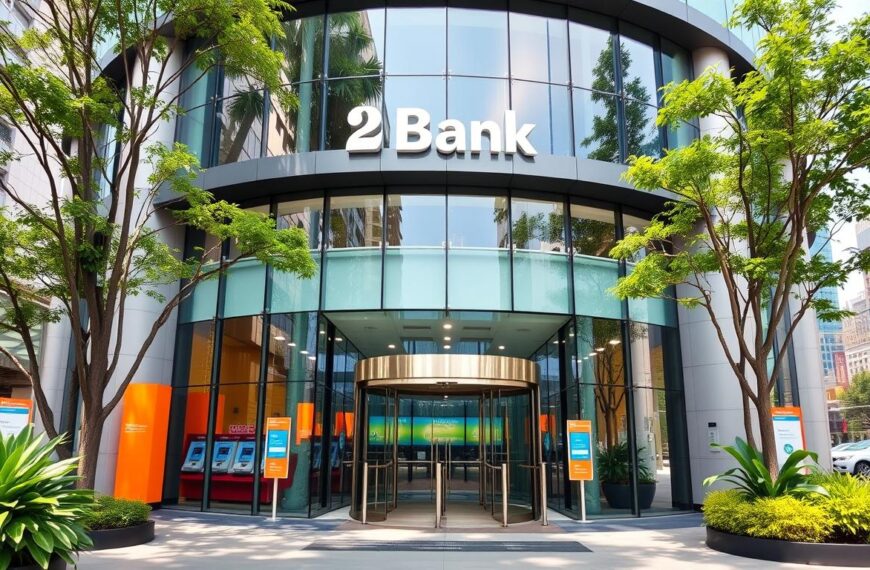The UK property market is facing new challenges, making investors wonder if 2024 is the right time to invest. Despite these challenges, the market is expected to grow, with a 3% rise in property prices nationwide and a 2% increase in London’s mainstream market1. This growth is due to economic stability, rising wages, and falling unemployment, boosting investor confidence.
The rental market is also booming, with a 11.1% average rental increase in the UK and a 15.2% rise in London2. Cities like Manchester, Birmingham, and Bristol are expected to see rental prices jump by over 18% by 20272. This makes them prime spots for investment. The private rented sector, worth over £1 trillion, is set to grow, possibly leading to more renters than homeowners by 2039.
Investors need to keep up with the latest trends and developments to make smart choices. In this article, we’ll look at the UK property market’s current state, the effect of interest rates, regional price growth, and the best investment opportunities for 2024.
Current State of the UK Property Market in 2024
The UK housing market is bouncing back after a tough 2023. Halifax reports house prices have hit a two-year high, thanks to the recovery from Liz Truss’s mini-budget3. Mortgage rates are now more affordable, making it easier for buyers to enter the market.
Rightmove found that one in five homes for sale were once rentals, with London seeing even more at one in three3. The Telegraph warns of a 15% to 20% rent hike in London if landlords keep leaving. Yet, there’s a 19% rise in interest in buy-to-let properties, showing investors are coming back3.
Impact of Interest Rates on Property Prices
The Bank of England cut interest rates from 5% to 4.75% in November 2024. This change affects mortgage costs4. House prices in the UK are rising, with a 0.2% increase in October 2024, reaching £293,9994.
Regional Price Growth Variations
By 2030, the average house price in England could hit £457,433. Areas like Merseyside and East Riding of Yorkshire might see prices under £280,0004. High prices are due to inflation and population growth, with the UK’s population set to grow by 6.6 million by 20364.
Over the last 50 years, Labour governments have seen average house price growth at 9.45%, compared to 6.45% under Conservatives3. The Welsh Government plans to cut income tax by 25% to attract more buyers and investors, aiming for economic growth3.
Market Recovery Indicators
House prices in the UK fell after Liz Truss’s Mini Budget in August 20225. Mortgage rates soared in mid-2023 and kept rising into spring 20245. The Bank of England then reduced the base rate to 4.75% in November5.
Average house prices hit a record high of £298,083 in November 2024, up 4.8% annually, according to Halifax HPI5. Nationwide House Price Index also reported a 3.7% annual increase in November 20245. Zoopla’s House Price Index for November 2024 showed a 1.5% annual increase, reaching £267,6005.
Land Registry data for September showed a 2.9% annual inflation in average UK house prices, with a 0.3% monthly decline5. Rightmove HPI revealed asking prices increased by 0.3% in September 2024 and fell by 1.4% in October5. Savills forecast a 2.5% increase in average house prices in 2024, while Knight Frank predicted a 3% rise5. Zoopla expects a 2% increase in house prices by the end of 2024 and a 2.5% increase in 20255. Rightmove anticipates a 4% rise in asking prices on average for the upcoming year5.
The Royal Institution of Chartered Surveyors (RICS) expects rising house prices as buyers and sellers return5.
Is 2024 a Good Time to Invest in Real Estate: Expert Analysis
Experts have given their views on the UK property market for 2024. They see both chances and hurdles for those investing in real estate. Savills’ forecasts suggest a 3% drop in UK property prices in 2024, followed by a 17.9% growth over five years6. JLL also predicts a 3% drop in 2024 but expects a 14% rise by 20286.
The Bank of England might cut interest rates by summer 2024. This could make the market more active and boost investment chances7. London’s property market is expected to stay strong, with JLL predicting a 19.8% increase in Central London prices by 20286.
Although there might be a small dip in 2024, the long-term outlook for UK real estate looks good. Rental demand has jumped by 65% in Q3 2023 compared to 2022, and is 22% higher than before the pandemic6. The UK’s focus on green projects and REITs makes property an attractive choice for investors7.
While 2024 might see a small drop, the long-term view for UK real estate is bright. Rental demand has soared, showing a strong rental market6. The UK’s green projects and REITs make property a good choice for investors7.
| Forecast | 2024 Price Change | 5-Year Cumulative Growth |
|---|---|---|
| Savills | -3% | 17.9% |
| JLL | -3% | 14% |
“Property investment in the UK offers potential for long-term growth through capital gains and rental income, and leveraging tax benefits can enhance returns.”7
Overall, 2024 might see a small price drop, but the UK real estate market looks positive for the long term. Experts predict a steady recovery and strong growth ahead. As the market changes, investors should watch trends and seek advice to find the best opportunities6.
Prime Investment Locations in the UK for 2024
The UK property market is changing, with some areas becoming top spots for investors in 2024. The Midlands and North West of England are showing great promise for those looking to grow their investments8.
Emerging Property Hotspots
Birmingham is a lively city with a growing economy. Rents have gone up by 22% in five years8. Property prices are expected to jump by 19.9% by 20288. Birmingham’s population will hit 1.23 million by 2038, making it a good place for investors8. Areas like Selly Oak (B29) can offer up to 7% rental yields8.
Derby is another city to watch. Property prices are set to rise by 16.5% in four years8. Rents will go up by 9.3% from 2023 to 20248. With 48% of its population under 35, Derby has strong rental demand8.
Cities with Highest Growth Potential
Leeds is a lively city with over 65,000 students8. It’s expected to see property prices grow by 14.6% by 20288. Rental prices will increase by 24% by 20288. Leeds is great for buy-to-let investors. Areas like LS3 offer up to 12% rental yields8. LS9 in Harehills provides a 7.7% yield8.
Regeneration Areas to Watch
Slough is becoming a top investment spot thanks to urban regeneration and the Elizabeth Line. These projects will boost property prices in the future.
London and the South East are still leading in property demand. Demand for homes in London is up by 16% and in the South East by 19%8. These areas are perfect for investors seeking stability and growth.
“Birmingham is the 3rd best UK city for attracting graduates with no prior links to the city8, and Derby has the 7th highest graduate wage in the UK at £24,100.”8
These hotspots, high-growth cities, and regeneration areas offer great investment chances for 2024.
Rental Market Opportunities and Trends
The UK rental market is growing fast, with rents up 5.1% in the last year. This is the biggest rise since 20169. Experts predict rents will rise by 22% by 2028, with London leading at 29%9. Currently, the average rent is about £1,270, a 7.5% increase from last year9.
Investors can earn up to 8% in cities like Liverpool and Manchester. The rental market also includes a wide range of tenants, with 1.18 million aged 45-50.
Next year, UK rental growth is expected to slow to 5%, but London might see a 6% rise9. This is a chance for investors to make the most of the UK’s rental market, especially in sought-after areas9. But, landlords must deal with supply shortages and rule changes to keep their investments strong.
The UK rental market is set for more growth, offering chances for smart investors. But, it also brings challenges that need careful handling.
“The rental market in the UK is a dynamic and evolving landscape, presenting both opportunities and challenges for landlords. By staying attuned to the latest trends and developments, investors can position themselves to capitalise on the resilience of this thriving sector.”
Investment Strategies and Financial Considerations
In 2024, the property market is buzzing with opportunities for those who know how to spot them. Focusing on areas with high demand and cutting costs can lead to big profits. Bankrate notes that mortgage rates have dropped, making it a great time to get a good deal on a buy-to-let mortgage.
Buy-to-Let Investment Options
Investors can use a 35% deposit to get into the market with competitive mortgage rates. The UK’s real estate market is huge, with a GDP of £2.64 trillion and a population of 67.7410. This means lots of chances to make money in sought-after areas.
The residential sector is also ripe for investment. Options like “fix and flip” properties and rental homes can bring in good returns as interest rates fall.
Mortgage Market Overview
With mortgage rates going down, finding good financing for real estate is easier. Office buildings saw a vacancy rate of 18% in January 2024, up 130 basis points from last year11. Despite commercial challenges, the residential market is full of potential.
Tax Implications for Investors
Real estate investors can deduct mortgage interest and property expenses from their taxes. Commercial property values in the U.S. dropped by 9% in 202311. This shows why tax planning is key to making the most of your investments.
Investors can also include real estate in a self-directed retirement plan. This can involve partnering with others, investing in different properties, or joining real estate funds or private equity.
“With the right investment strategies and a well-planned approach, 2024 can be a promising year for real estate investors in the UK.”
Market Risks and Challenges to Consider
The property market in 2024 faces several risks and challenges. Economic changes can greatly affect property values and rental income, posing risks for investors12. The UK’s rental increase is expected to be 11.1%, with London seeing a rise to 15.2%12. However, economic uncertainties might alter these forecasts.
Investing in real estate comes with high upfront costs. These include down payments, stamp duty, and registration charges13. Managing rental properties also requires a lot of time and effort, including maintenance and handling tenants.
Rental income can be affected by vacancy risks, especially during lockdowns or when people work from home13. Market downturns due to economic conditions are also a concern for investors14. Despite this, more than two-thirds (68%) of respondents are optimistic about the short-term outlook for global real estate, up from 48% last year.
| Risk | Description |
|---|---|
| Economic Uncertainties | Fluctuations in the economy can impact property values and rental income, posing risks for investors1214. |
| High Upfront Costs | Significant expenses, such as down payments, stamp duty, and registration charges, can be a challenge for investors13. |
| Property Management Responsibilities | Ongoing maintenance and tenant management can be time-consuming and resource-intensive13. |
| Vacancy Risks | Events like lockdowns or work-from-home mandates can affect rental income13. |
While the property market in 2024 offers opportunities, investors must weigh these risks and challenges carefully. This ensures they make informed decisions and avoid potential pitfalls13.

Conclusion
The UK property market in 2024 is full of chances and hurdles for investors. Despite some economic worries, the market shows it can bounce back. It’s expected to see price hikes15 and strong demand for rentals16.
Prime spots for investment are in the Midlands and North West, and areas being revamped. These places offer great chances for those looking to invest in real estate15.
The rental market looks promising, especially in busy cities15. Investors need to think about their money plans, like mortgages and taxes, to make smart choices16. There are risks like market ups and downs and the need to manage properties. Yet, the outlook for UK property investment is bright, with growth expected over the next five years15.
In summary, the UK property market in 2024 is lively and needs careful thought and strategy. By keeping up with the latest and using the right tools, investors can make smart moves. This way, they can benefit from the UK’s strong real estate market1615.
FAQ
What is the current state of the UK property market in 2024?
The UK property market is looking strong in 2024. It’s expected to see a 3% price rise nationwide. London’s mainstream market might see a 2% increase. Economic growth and lower unemployment are boosting investor confidence.
How is the rental market performing in the UK?
The rental market is booming, with a 11.1% average UK rental increase. London saw a 15.2% rise. Cities like Manchester, Birmingham, and Bristol are expected to see rental growth over 18% by 2027.
What are the key indicators of market recovery?
The market is bouncing back after a tough 2023. Nationwide reported a 0.2% increase in November. The average UK property price hit £291,000 in September 2023. Mortgage approvals have jumped by 18.5% since January, showing more people are buying homes.
Which regions are expected to see the highest property price growth?
The South East saw an 11% increase in sold prices since 2020. London’s market is expected to stay strong, with JLL predicting a 19.8% price rise by 2028.
What are the key investment opportunities in the UK property market?
The Midlands and North West are great for property investment. Cities like Birmingham, Manchester, and Liverpool are seeing strong demand and regeneration projects.
How is the rental market performing in the UK?
The rental market is growing fast, with a 5.1% increase in the last year. JLL predicts a 22% rise in UK rental prices by 2028. Central London is expected to see a 29% increase.
What are the key considerations for buy-to-let investments in 2024?
Buy-to-let investments are still attractive. Focus on high-demand areas and cut costs. With a 35% deposit, you can get good mortgages for buy-to-let properties.
What are the potential risks and challenges for property investors in 2024?
Investors face market ups and downs, high purchase costs, and ongoing property management. Vacancy risks during lockdowns or work-from-home mandates are also concerns.

















